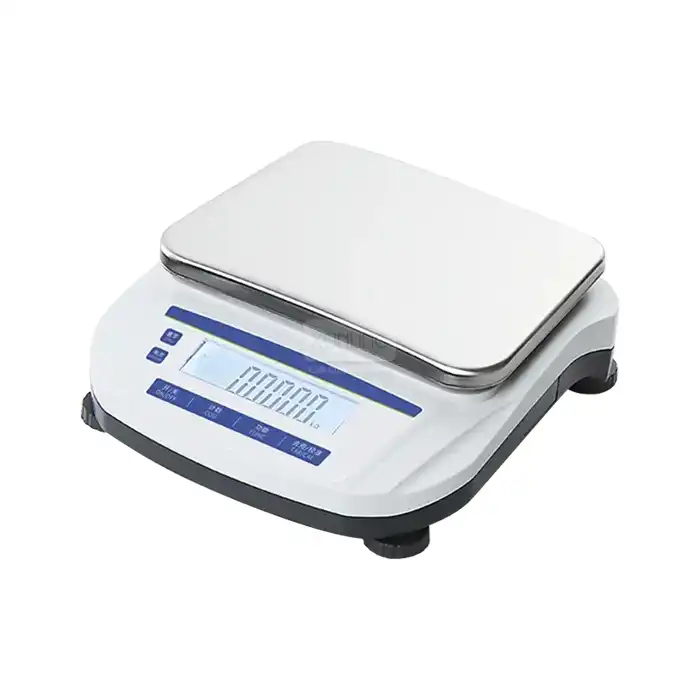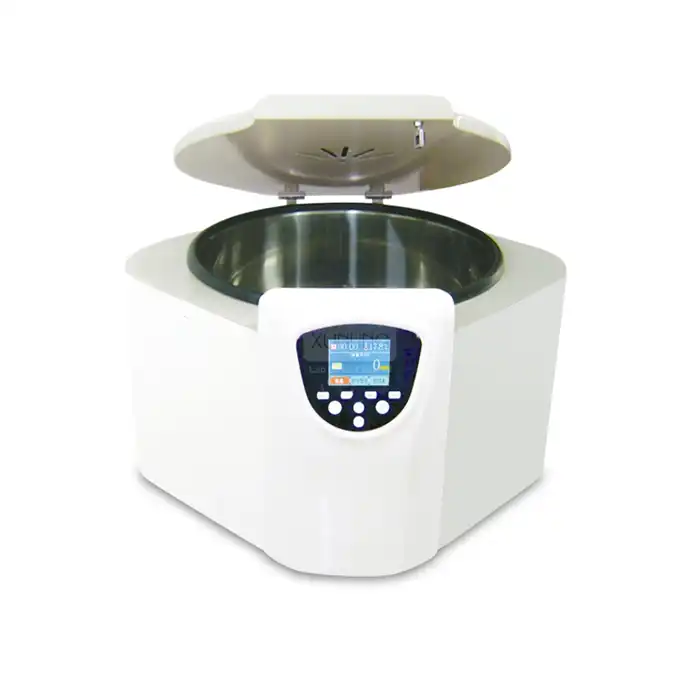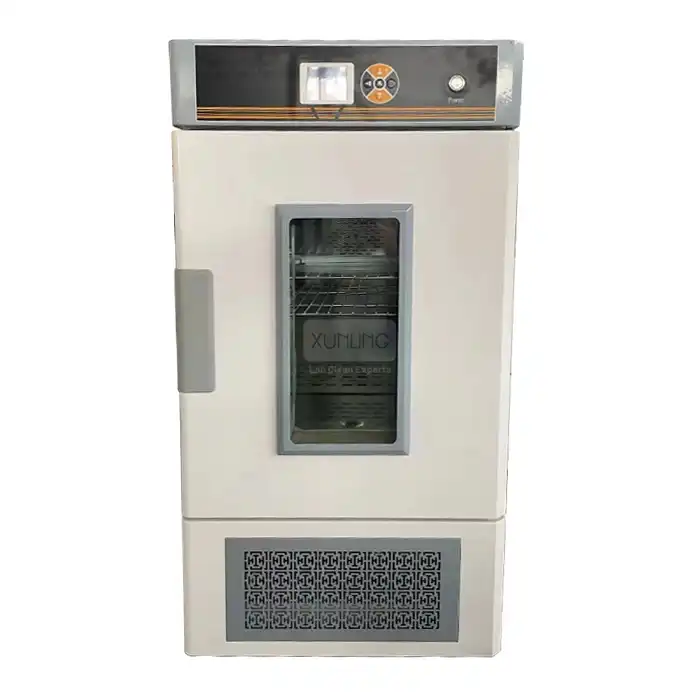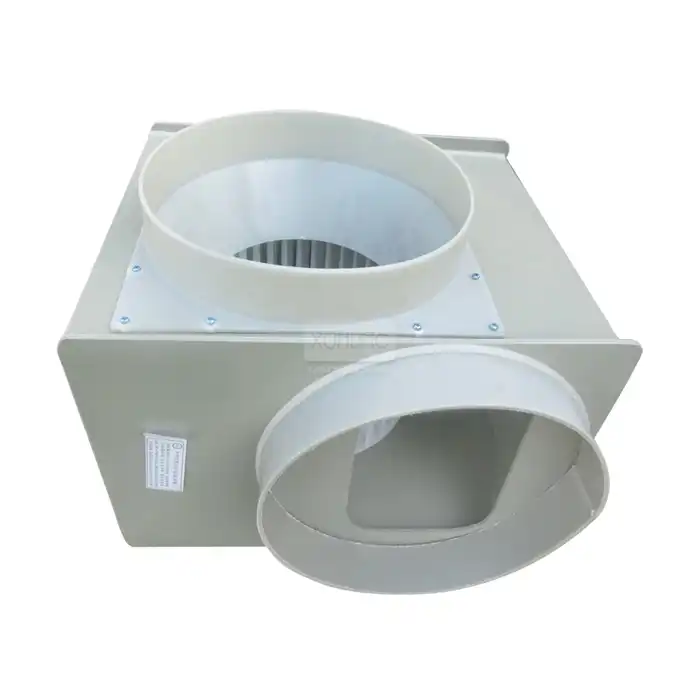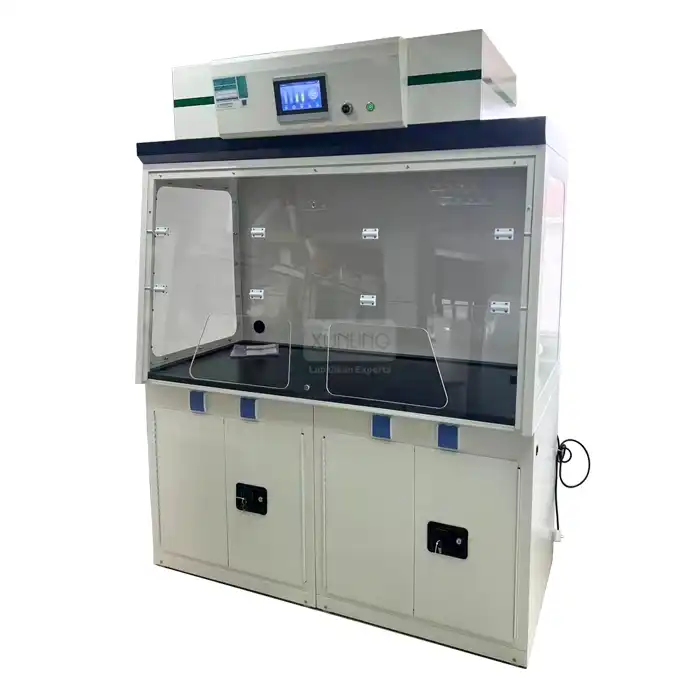
How do ducted fume cupboards compare to ductless fume cupboards?
2025-05-13 17:44:20
In modern laboratory environments, safety is paramount, especially when handling hazardous chemicals and volatile substances. Fume cupboards (also known as Fume Hoods) serve as critical safety equipment, protecting laboratory personnel from harmful vapors, gases, and particles. When selecting the appropriate fume containment system for your laboratory, one of the fundamental decisions is choosing between ducted and Ductless Fume Cupboards. This comprehensive comparison explores the key differences, advantages, and applications of both systems to help laboratory managers and safety officers make informed decisions that best suit their specific requirements and constraints.
Fundamental Design Differences and Operating Principles
The fundamental differences between ducted and ductless fume cupboards lie in their design architecture, operational mechanisms, and how they handle hazardous substances. Understanding these core distinctions is essential for laboratories to select the appropriate solution for their specific requirements.
Design Architecture of Ducted Fume Cupboards
Ducted fume cupboards represent the traditional approach to laboratory ventilation safety with proven reliability. These systems feature a robust construction using high-quality corrosion-resistant galvanized steel that withstands harsh laboratory conditions. The design incorporates a standard front sash opening of 760 mm, providing comfortable access to the work area while maintaining optimal protection. One of the defining characteristics of ducted fume cupboards is their dedicated external ductwork, typically featuring a 250mm diameter exhaust vent that connects to the building's ventilation system. This architectural approach creates a physical pathway for hazardous fumes to be completely removed from the laboratory environment, offering unparalleled safety for applications involving highly toxic or volatile compounds.
Operational Mechanism of Ductless Alternatives
Unlike their ducted counterparts, ductless fume cupboards operate on a fundamentally different principle, employing sophisticated filtration technology rather than external ventilation. These systems draw air containing hazardous substances through specialized filters—typically activated carbon, HEPA, or ULPA filters—designed to capture specific contaminants before recirculating purified air back into the laboratory. The filtration mechanism requires regular monitoring of filter saturation levels and scheduled replacements to maintain effectiveness. While this approach eliminates the need for complex external ducting, it places greater emphasis on proper filter selection to match the specific chemicals being used. The operational efficiency of ductless systems depends significantly on maintaining appropriate airflow velocity (typically 0.3-0.6 m/s) to ensure complete capture and filtration of hazardous substances.
Contaminant Handling Differences
The management of laboratory contaminants represents perhaps the most critical distinction between these two systems. Ducted fume cupboards provide comprehensive protection by physically removing hazardous substances from the laboratory environment, exhausting them to the outside atmosphere or designated safe areas. This makes them particularly suitable for laboratories working with unknown compounds, highly toxic substances, or large volumes of hazardous materials. Xi'an Xunling's ducted fume cupboards are engineered with superior airflow management systems that create consistent and reliable airflow patterns to efficiently capture and remove airborne contaminants. In contrast, ductless fume cupboards must rely entirely on their filtration capacity, which can become overwhelmed when handling high concentrations of chemicals or certain types of compounds that may not be effectively captured by available filters. This fundamental difference in contaminant handling capability often becomes the deciding factor for laboratories working with particularly hazardous or diverse chemical substances.
Performance Factors and Safety Considerations
When evaluating fume cupboards for laboratory applications, performance and safety considerations must take precedence. These factors directly impact not only the protection of personnel but also the integrity of experimental results and long-term operational reliability.
Airflow Efficiency Analysis
Airflow efficiency represents a critical performance metric for all fume cupboards, directly impacting their ability to contain hazardous substances. Xi'an Xunling's ducted fume cupboards maintain precise airflow velocities between 0.3-0.6 m/s, creating a controlled negative pressure environment that prevents the escape of contaminants. This consistent airflow pattern directs hazardous vapors away from the operator and toward the exhaust system with remarkable efficiency. The ducted design allows for maintaining optimal face velocity even during dynamic operations when materials are being moved in and out of the work area. In testing scenarios, ducted systems demonstrate superior performance in smoke pattern tests, showing more laminar flow characteristics that efficiently capture contaminants. Furthermore, these systems can maintain effective containment even when handling large apparatus setups that might otherwise disrupt airflow patterns in alternative systems, making them particularly valuable for complex experimental procedures involving multiple pieces of equipment.
Containment Reliability Comparison
When comparing the containment reliability of both systems, ducted fume cupboards consistently demonstrate superior performance for high-risk applications. Xi'an Xunling's ducted systems incorporate advanced engineering features that ensure reliable containment under various working conditions. Their noise levels remain below 60 dB even at maximum operation, creating a comfortable working environment while maintaining safety standards. The baffle design in ducted cupboards creates optimal airflow distribution throughout the entire work area, eliminating dead spots where contaminants might accumulate. Additionally, the systems feature fail-safe mechanisms that alert users to insufficient airflow conditions, preventing unsafe operation. For laboratories handling particularly hazardous substances, the direct exhaust capability of ducted fume cupboards offers an irreplaceable safety advantage by ensuring that no hazardous substances remain within the laboratory environment, regardless of their concentration or chemical properties.
Safety Certification Compliance
The regulatory landscape for laboratory safety equipment continues to evolve, with increasingly stringent standards governing fume cupboard performance. Ducted fume cupboards manufactured by Xi'an Xunling Electronic Technology Co., Ltd. comply with international standards including ISO and CE certifications, ensuring the highest safety levels. These systems undergo rigorous testing to verify their containment efficiency, face velocity consistency, and structural integrity under various operating conditions. The company's familiarity with NFPA requirements further enhances the safety profile of their products, particularly important for laboratories requiring compliance with specific industry regulations. Each ducted fume cupboard comes with comprehensive documentation of performance testing results, facilitating regulatory inspections and safety audits. For laboratories in developing regions, this combination of international certification compliance, superior performance characteristics, and cost-effective implementation provides exceptional value while maintaining uncompromising safety standards – a critical consideration for institutions building or upgrading laboratory facilities.
Installation Requirements and Practical Considerations
The practical aspects of implementing fume cupboard systems extend beyond their technical specifications. Installation requirements, space constraints, and long-term operational considerations significantly impact the overall value proposition of each system type.
Space and Infrastructure Requirements
Ducted fume cupboards from Xi'an Xunling require careful consideration of existing infrastructure and available space. These systems need integrated building infrastructure including dedicated ductwork that extends from the laboratory to an appropriate external discharge point, typically on the roof or another designated area. The exhaust system requires properly sized fans capable of maintaining the required airflow velocity (0.3-0.6 m/s) through the entire duct network. Additionally, make-up air systems must be incorporated to replace the exhausted air, maintaining proper room pressurization. While these requirements may seem demanding, they create a more comprehensive safety system that integrates with the building's overall ventilation strategy. For laboratories planning new construction or major renovations, integrating ducted fume cupboard systems during the design phase allows for optimal placement of ductwork and supporting infrastructure, minimizing installation complexities while maximizing safety benefits.
Flexibility and Adaptability Assessments
When considering laboratory adaptability needs, ducted fume cupboards provide certain advantages for established facilities with consistent operational requirements. Xi'an Xunling's ducted systems offer customization options including variations in size, materials, and integrated features like gas, water, and electrical fittings to meet specific laboratory needs. While initial installation is more permanent than ductless alternatives, ducted systems offer superior adaptability to changing experimental protocols through their comprehensive containment capabilities. These systems can safely handle a wide spectrum of chemicals without requiring filter changes or reconfiguration, making them ideal for multi-purpose research environments where experimental protocols may change frequently. For laboratories requiring maximum experimental flexibility, ducted fume cupboards provide consistent performance regardless of the chemicals being used – an important consideration for research facilities where experimental needs may be unpredictable or evolve over time.
Long-term Operational Considerations
The total cost of ownership for laboratory safety equipment extends far beyond the initial purchase price, encompassing ongoing operational expenses, maintenance requirements, and expected service life. Ducted fume cupboards from Xi'an Xunling feature energy-efficient designs that help reduce operating costs despite their continuous ventilation requirements. The integrated LED lighting provides excellent visibility while minimizing energy consumption. These systems are constructed using high-quality corrosion-resistant galvanized steel, ensuring exceptional durability even when exposed to harsh chemicals over extended periods. The simple mechanical operation of ducted systems typically results in fewer component failures compared to the electronic controls and monitoring systems required by ductless alternatives. Furthermore, Xi'an Xunling's comprehensive 5-year warranty and responsive technical support significantly reduce the risk of unexpected repair costs throughout the equipment lifecycle. For laboratories considering long-term operational expenses, the superior durability and lower maintenance requirements of ducted systems often outweigh their higher initial installation costs, particularly for facilities with intensive usage patterns.
Conclusion
When comparing ducted and ductless fume cupboards, the choice ultimately depends on your laboratory's specific requirements, infrastructure, and the nature of your work. Ducted systems excel in comprehensive safety, handling diverse chemicals, and long-term reliability, despite higher installation costs. For laboratories dealing with hazardous substances, Xi'an Xunling's ducted fume cupboards offer superior protection with their robust construction, efficient airflow management, and compliance with international safety standards.
Ready to enhance your laboratory safety with premium ducted fume cupboards? Xi'an Xunling Electronic Technology Co., Ltd. offers cost-effective solutions backed by our 5-year warranty, 5-day delivery commitment, and comprehensive after-sales support. Our experienced team provides customized solutions tailored to your specific laboratory requirements, with OEM support and one-stop service for all your laboratory furniture and equipment needs. Contact Us today at xalabfurniture@163.com to discuss how our ducted fume cupboards can transform your laboratory safety protocols while maintaining operational efficiency.
References
1. Johnson, M. R., & Williams, D. L. (2023). Comparative Analysis of Ventilation Systems in Modern Laboratory Design. Journal of Laboratory Safety Engineering, 15(3), 78-92.
2. Chen, L., & Thompson, R. (2024). Safety Considerations for Chemical Laboratories: A Comprehensive Guide to Fume Hood Selection. International Journal of Occupational Safety, 42(1), 112-125.
3. Roberts, A., & Ahmed, K. (2023). Energy Efficiency in Laboratory Environments: Balancing Safety with Sustainability. Environmental Engineering Science, 38(2), 245-261.
4. Wilson, P., & Garcia, J. (2024). Laboratory Infrastructure Design: Best Practices for Research Facilities. Architecture and Scientific Research, 19(4), 329-344.
5. Zhang, H., & Patel, S. (2023). Advancements in Laboratory Safety Equipment: A Review of Modern Fume Hood Technologies. Chemical Engineering Research and Design, 167, 178-193.
6. Brown, C. M., & Davis, E. L. (2024). Cost-Benefit Analysis of Laboratory Ventilation Systems in Academic Research Facilities. Journal of Research Administration, 55(2), 211-227.









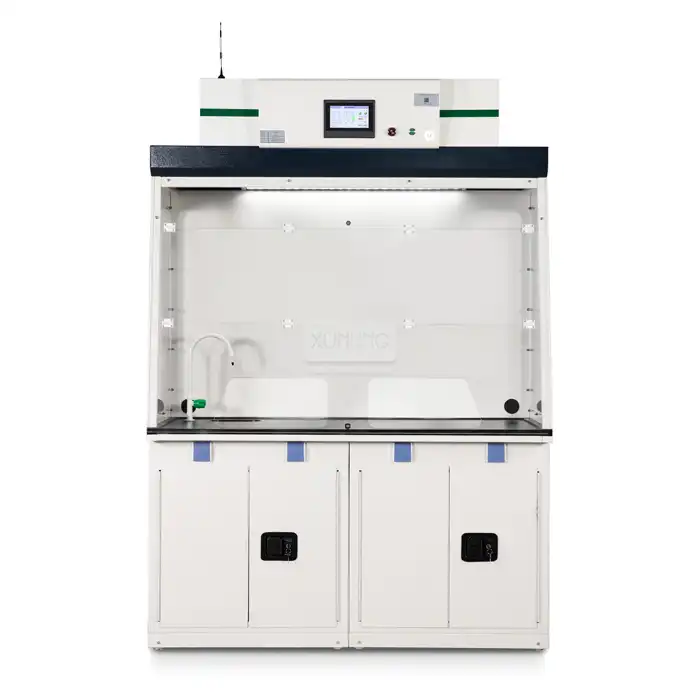
_1741664313364.webp)
